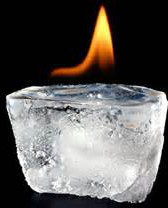Heat vs. Cold for Soreness
 Temperature-related modalities for use in the post-workout phase of recovery have come under fire (ha!) recently, with evidence being presented that cold temperatures might inhibit beneficial inflammation and reduce training adaptations.
Temperature-related modalities for use in the post-workout phase of recovery have come under fire (ha!) recently, with evidence being presented that cold temperatures might inhibit beneficial inflammation and reduce training adaptations.
But while the jury is still out on that school of thought, there are circumstances where less muscle soreness trumps potential training adaptations. We’re thinking about situations like a multi-day tournament (i.e. the CrossFit Games, Olympics, World Cup, or even just a local weekend-long tourney in your favorite sport). In these situations, recovery of muscular strength and power is the immediate goal – but does heat or cold therapy actually help? And if so, which is better?
A recently published study would suggest that cold therapy is superior to heat for recovering muscular strength. In this study, 100 subjects of similar fitness levels did squats for 15 minutes and either heat or cold was applied immediately after or 24 hours after exercise (using heat or cold wraps). The control group (no heat or cold) lost 24% of their strength after exercise, but participants with heat or cold applied immediately after exercise only lost 4%. For strength recovery and pain management, past the 24 hour mark, cold was more effective.
Cold Vs. Heat After Exercise—Is There a Clear Winner for Muscle Soreness
Petrofsky, Jerrold S.; Khowailed, Iman Akef; Lee, Haneul; Berk, Lee; Bains, Gurinder S.; Akerkar, Siddhesh; Shah, Jinal; Al-Dabbak, Fuad; Laymon, Mike S.
Abstract
Because of the differences in the exercise type, temperature, and timing of the use of cold and heat after exercise in different studies, there is no clear conclusion as to the efficacy of either modality on reducing delayed onset muscle soreness. One hundred subjects at similar fitness levels were examined. They accomplished leg squats for 15 minutes and heat and cold were applied after or 24 hours after exercise using ThermaCare heat or cold wraps. Measurements obtained were strength, the force to passively move the knee, analog visual pain scales, and blood myoglobin. Control subjects lost 24% strength after exercise. Subjects with heat or cold just after exercise only lost 4% strength (p < 0.01). For strength recovery, cold applied after 24 hours was better than heat at 24 hours. Heat or cold applied after exercise was significantly better to prevent elastic tissue damage (p < 0.01), whereas heat and cold immediately after exercise caused no loss in muscle myoglobin and heat or cold after 24 hours showed no less muscle damage from myoglobin than in control subjects. Myoglobin in the control and heat and cold 24-hour groups averaged 135.1% of the baseline data but averaged 106.1% of baseline in the immediate heat and cold groups. For reducing pain, control subjects showed a significant amount of pain the days after exercise. But cold immediately after exercise or 24 hours later was superior to heat in reducing pain. In conclusion, both cold and heat appear to be efficacious in reducing muscle damage after exercise.


